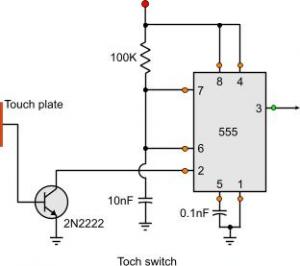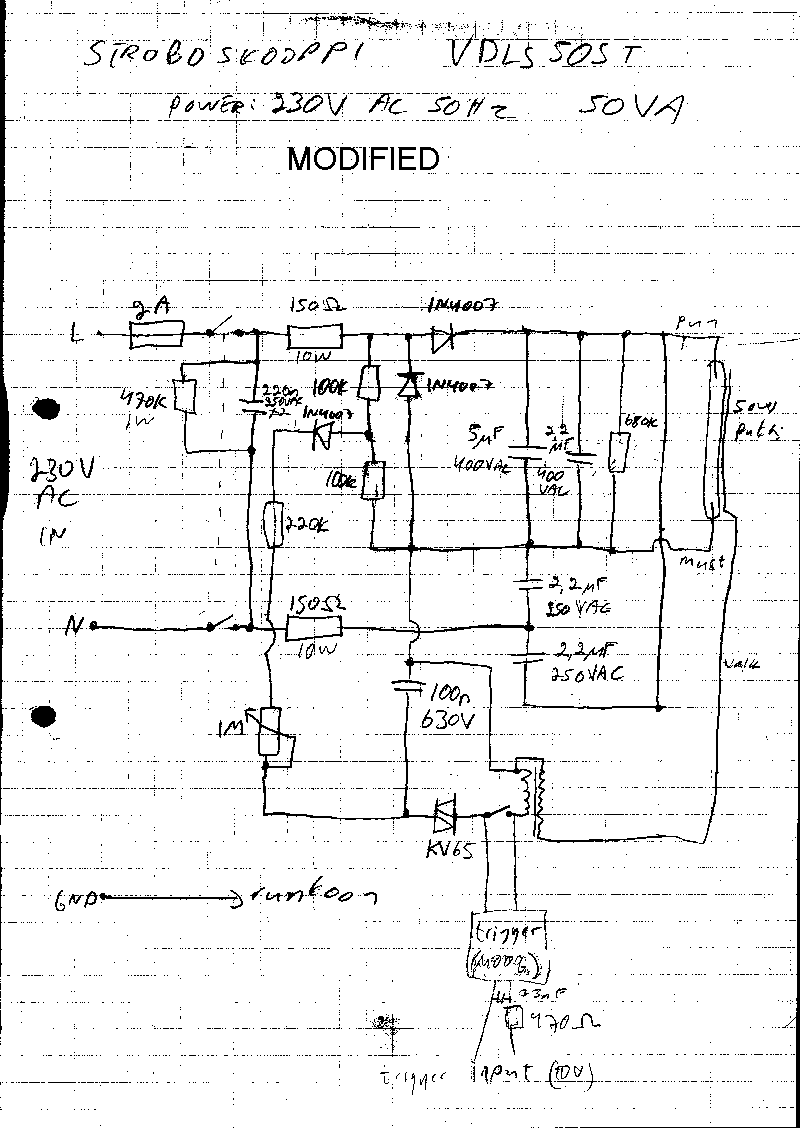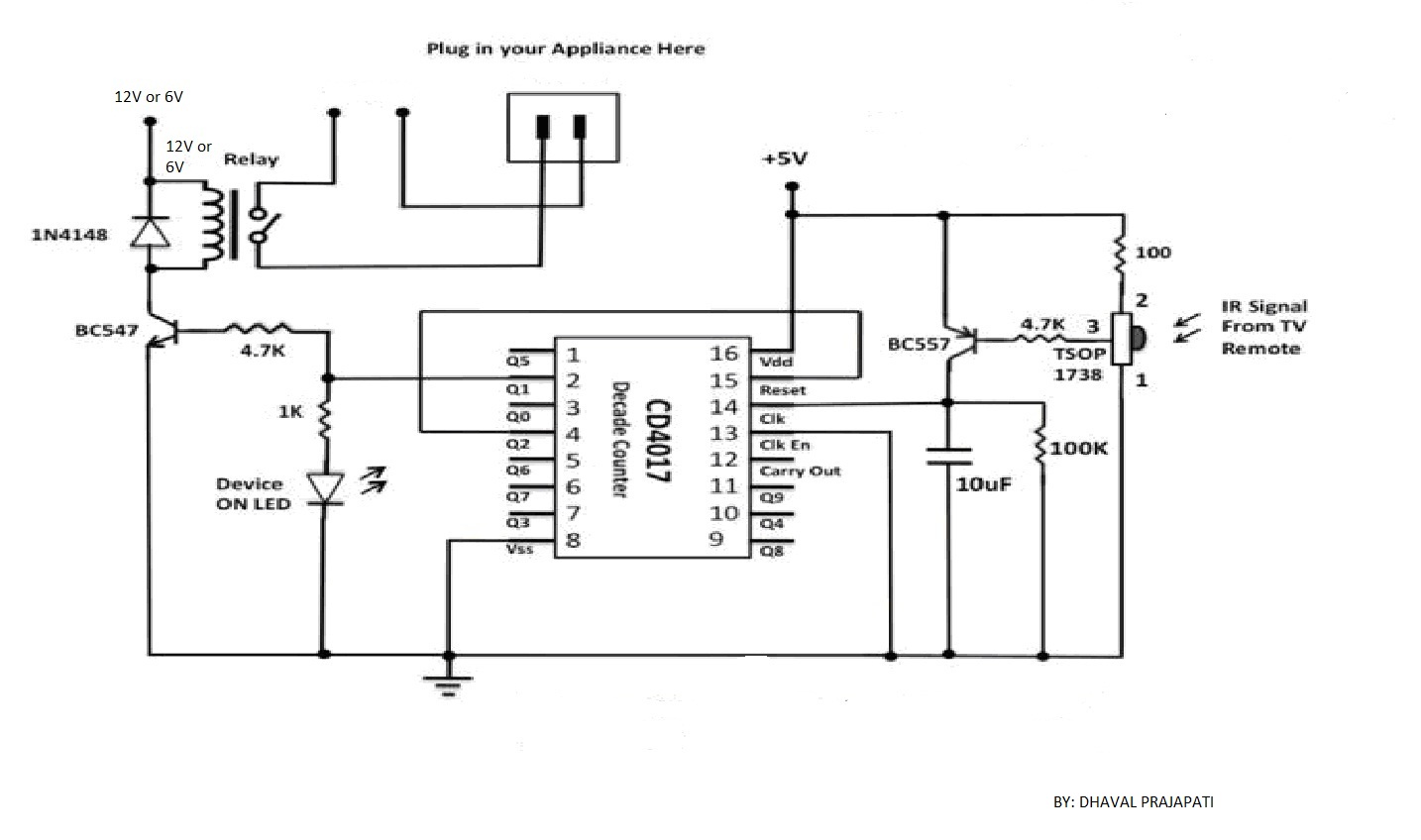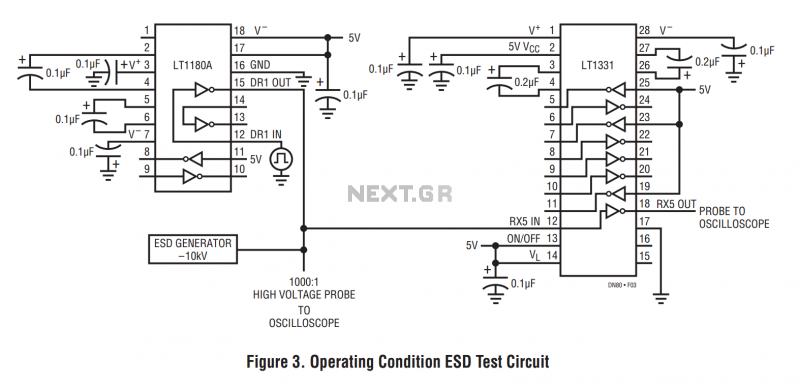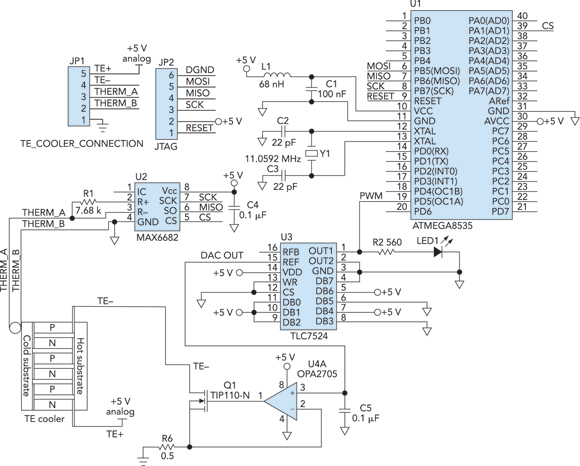
Three-way operation allows the motor-controlled circuits
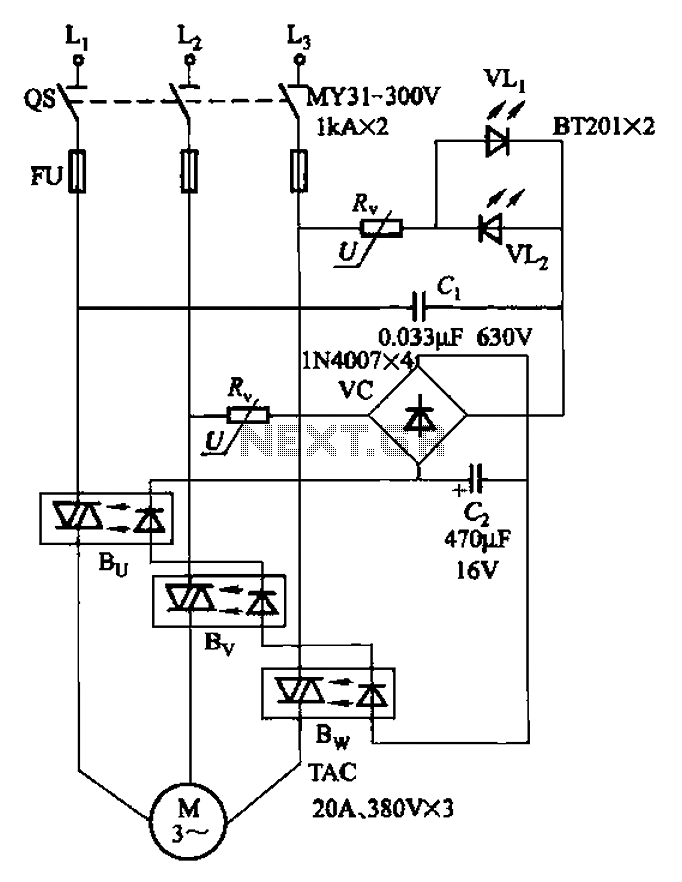
The circuit depicted in Figure 3-93 is integrated with an optical phase sequence protection relay.
The circuit in question is designed to provide phase sequence protection using an optical relay mechanism. Optical phase sequence protection relays are crucial in applications where the correct phase sequence is necessary for the proper operation of three-phase motors and other equipment. The relay operates by monitoring the phase sequence and ensuring that it adheres to the required configuration.
In this circuit, the optical relay is likely to utilize phototransistors or photodiodes to detect the phase sequence. The input from the three-phase supply is fed into the relay, which analyzes the phase relationships between the three lines. If the sequence is correct, the relay remains in a closed state, allowing current to flow to the load. Conversely, if an incorrect phase sequence is detected, the relay opens, thereby disconnecting the load and preventing potential damage to the equipment.
The circuit may also include additional components such as resistors, capacitors, and diodes to filter signals and stabilize the operation. The design must ensure that the relay operates within specified voltage and current ratings to avoid false triggering or failure. Furthermore, the layout of the circuit should minimize electromagnetic interference (EMI) and ensure reliable operation in various environmental conditions.
Overall, this circuit serves as a critical protective measure in industrial and commercial applications, safeguarding motors and other three-phase devices from phase sequence-related failures. Circuit shown in Figure 3-93. It is coupled with optical phase sequence protection relay.
The circuit in question is designed to provide phase sequence protection using an optical relay mechanism. Optical phase sequence protection relays are crucial in applications where the correct phase sequence is necessary for the proper operation of three-phase motors and other equipment. The relay operates by monitoring the phase sequence and ensuring that it adheres to the required configuration.
In this circuit, the optical relay is likely to utilize phototransistors or photodiodes to detect the phase sequence. The input from the three-phase supply is fed into the relay, which analyzes the phase relationships between the three lines. If the sequence is correct, the relay remains in a closed state, allowing current to flow to the load. Conversely, if an incorrect phase sequence is detected, the relay opens, thereby disconnecting the load and preventing potential damage to the equipment.
The circuit may also include additional components such as resistors, capacitors, and diodes to filter signals and stabilize the operation. The design must ensure that the relay operates within specified voltage and current ratings to avoid false triggering or failure. Furthermore, the layout of the circuit should minimize electromagnetic interference (EMI) and ensure reliable operation in various environmental conditions.
Overall, this circuit serves as a critical protective measure in industrial and commercial applications, safeguarding motors and other three-phase devices from phase sequence-related failures. Circuit shown in Figure 3-93. It is coupled with optical phase sequence protection relay.
Warning: include(partials/cookie-banner.php): Failed to open stream: Permission denied in /var/www/html/nextgr/view-circuit.php on line 713
Warning: include(): Failed opening 'partials/cookie-banner.php' for inclusion (include_path='.:/usr/share/php') in /var/www/html/nextgr/view-circuit.php on line 713
